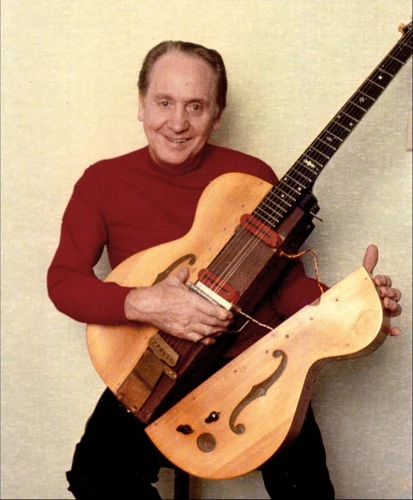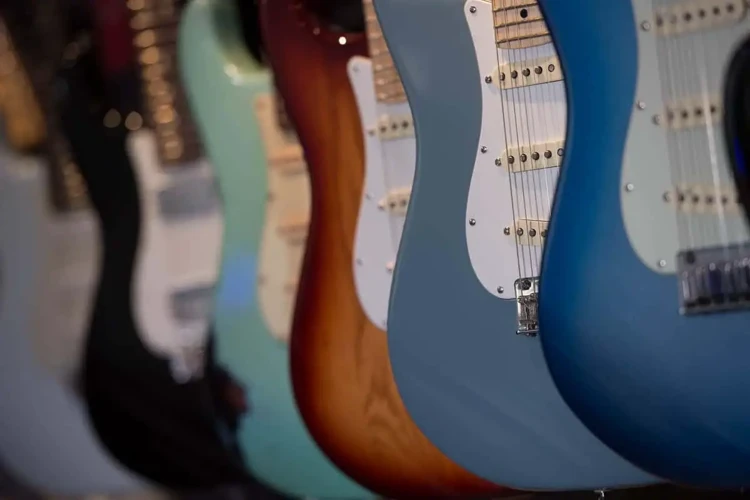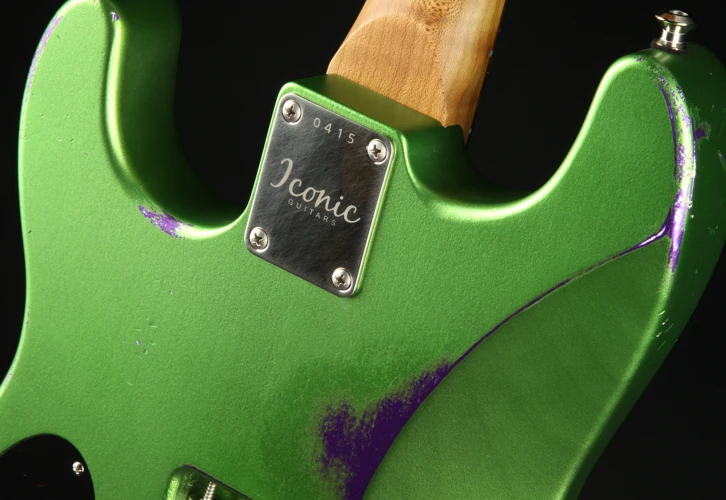Country music has a rich history deeply intertwined with the American experience. One of the iconic symbols of country music is the solid body guitar, a staple instrument that has shaped the sound and style of the genre. In this article, we will explore the significance of the solid body guitar in country music, its evolution over the years, and its impact on the artists and songs that have defined the genre.
The Birth of the Solid Body Guitar
The solid body guitar revolutionized the world of music when it was first introduced in the early 1950s. Prior to the solid body guitar, most guitars were hollow-bodied acoustic instruments, which were not always ideal for the high-energy performances characteristic of country music. The solid body guitar, with its solid construction and electric amplification, provided a louder, more versatile sound that was perfectly suited for the lively performances of country musicians.
One of the most famous solid body guitars in country music history is the Fender Telecaster, introduced in 1950. Known for its twangy sound and sturdy construction, the Telecaster quickly became a favorite among country artists, including legends like Merle Haggard and Buck Owens. The Telecaster’s simple yet elegant design and bright, cutting tone helped shape the sound of honky-tonk and traditional country music.
The Evolution of the Solid Body Guitar
Over the years, the solid body guitar has undergone various transformations to meet the evolving needs of country musicians. In the 1950s and 1960s, the Telecaster and its counterpart, the Fender Stratocaster, dominated the country music scene with their distinctive tones and playability. Artists like Keith Richards of The Rolling Stones and James Burton, known for his work with Elvis Presley, helped popularize these iconic guitars in country music.
In the 1970s and 1980s, country music experienced a shift towards a more rock-influenced sound, leading to the rise of guitars like the Gibson Les Paul and the Gibson SG. These guitars, with their heavier tones and thicker bodies, became popular choices for country rock and outlaw country artists looking to push the boundaries of traditional country music.
In recent years, newer solid body guitars like the PRS Silver Sky and the G&L ASAT have gained popularity among contemporary country artists. These guitars offer modern features and versatile tones that cater to the diverse musical styles found in today’s country music landscape.
The Influence of the Solid Body Guitar on Country Music
The solid body guitar has had a profound impact on the sound and style of country music. Its ability to produce a wide range of tones, from twangy and bright to warm and gritty, has made it a versatile instrument that can adapt to different musical genres within country music.
The distinctive sound of the solid body guitar has become synonymous with the twangy, down-home feel of traditional country music. Artists like Brad Paisley and Vince Gill have used the Telecaster to create classic country sounds that harken back to the genre’s roots, while modern country rock artists like Eric Church and Keith Urban have embraced the heavier tones of guitars like the Les Paul to push the boundaries of contemporary country music.
The solid body guitar has also played a significant role in shaping the performance style of country musicians. Its solid construction and electric amplification make it ideal for high-energy live performances, allowing artists to move freely on stage while delivering powerful, dynamic performances that engage audiences and capture the essence of country music.
The Iconic Solid Body Guitarists of Country Music
Throughout the history of country music, there have been numerous iconic guitarists who have made the solid body guitar an integral part of their sound. From the legendary playing of Chet Atkins on his Gretsch Country Gentleman to the blazing solos of Brad Paisley on his Fender Telecaster, these guitarists have helped define the sound of country music and inspire generations of musicians to pick up the instrument.
One of the most influential solid body guitarists in country music history is James Burton. Known for his innovative playing style and signature chicken-picking technique, Burton’s work with artists like Elvis Presley and Merle Haggard helped shape the sound of country music in the 1960s and 1970s. His iconic pink paisley Telecaster has become a symbol of his pioneering contributions to the genre.
Another standout solid body guitarist is Keith Urban, whose virtuosic playing and modern approach to country music have earned him critical acclaim and a loyal fan base. Urban’s use of the solid body guitar, particularly the Les Paul, has helped him achieve a unique sound that blends traditional country elements with contemporary rock influences, making him one of the most innovative artists in modern country music.
The Future of the Solid Body Guitar in Country Music
As country music continues to evolve and embrace new sounds and influences, the solid body guitar remains a vital instrument that will continue to shape the genre for years to come. With advancements in technology and design, solid body guitars are becoming more versatile and customizable, allowing artists to explore new sonic territories and push the boundaries of traditional country music.
Whether it’s the timeless twang of a Telecaster or the rich tones of a Les Paul, the solid body guitar will always have a place in the heart of country music. As artists continue to push the boundaries of the genre and explore new musical horizons, the solid body guitar will be there, providing the foundation for the iconic sounds that define country music.
Are you interested in the role of solid body electric guitars in country music? Learn more about solid body electric guitars in country music and how they contribute to the genre’s unique sound. Discover the significance of electric guitars in country songwriting and explore the differences between solid body and hollow body electric guitars in country music. Additionally, understand the importance of acoustic guitar body styles in country music for a comprehensive view of the instruments shaping this beloved genre.
Conclusion
In conclusion, the solid body guitar has been an essential instrument in the history of country music, shaping the sound and style of the genre for decades. From the twangy tones of the Telecaster to the powerful riffs of the Les Paul, the solid body guitar has played a crucial role in defining the sound of country music and inspiring generations of musicians.
As country music continues to evolve and embrace new influences, the solid body guitar will remain a timeless symbol of the genre’s rich heritage and innovative spirit. Whether in the hands of a traditionalist playing honky-tonk classics or a modern artist pushing the boundaries of contemporary country music, the solid body guitar will continue to be a versatile and iconic instrument that captures the essence of country music for years to come.



